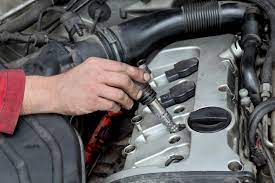What To Do When Your Engine Or Generator Won't Start Again Even After You Just Turned It Off

What To Do When Your Engine Or Generator Won't Start Again Even After You Just Turned It Off
You started your generator or engine. Everything worked fine, you turned it off. Now you return to turn it back on, but it wouldn't start anymore. This could happen to any type of engine; motorcycle engines, car engines, lorry engines, boat engines, grinding engines, aeroplane engines, etc. Anything that uses an engine could develop a fault or fail to start when you need it most.
Cases like this are also very common with generator sets.
This kind of situations could be pesky and create a lot of anxiety; but you don't need to panic. Here are some things you could do to resolve the issue:
Check the Fuel Level: You can start by checking the fuel level in the tank to see if you have enough fuel to start the engine. While it might seem that there is fuel in the engine or generator, it might not be enough or have enough pressure to drill into the carburetor to start the engine or generator. If the fuel is not enough or you suspect the fuel level in the tank, it is worth replenishing the tank, and trying to start the engine or generator again.
Check the Fuel Hose: There might be enough fuel; petrol, gasoline, diesel, kerosene, gas or whatever the type of fuel your engine uses in the tank, but it might not be draining to the proper channel. The fuel hose might be bad or damaged, hence the fuel may not be reaching the carburetor. It is worth checking to see if the fuel hose is intact and okay.
Clean or Change the Plug: Here, we are getting a little bit more technical. Not everybody might be technical enough to change a plug, or have the right tools to do so; but changing the plug of most engines including generators is pretty easy. Most plugs are positioned such that they could easily be loosed, cleaned and/or replaced when the need arises. For some engines or generators, you might need to loose one or two components, like dropping the fuel tank for some models of generators before having access to the plug. Notwithstanding, changing an engine plug is pretty simple if you have a plug spanner and screw drivers. You might need a spanner to lose some nuts/bolts before gaining access to the plug. When the plug is dirty, the generator may refuse to start. There are some signs to know when the issue is from the plug e.g., the engine or generator may be producing a shooting or inconsistent sound, the sound of the engine may not be solid or strong enough, the engine may start briefly and turn back off. All these may be pointers to a dirty or bad plug, but could also result from other problems with the engine.
Drain the Carburetor Fuel: Sometimes, the carburetor may over float. When this happens, fuel fills the carburetor to the brim and may start dripping to the exterior/ground or floor. Sometimes, the over-floating may not be too much, to let the dripping fuel fall to the ground/floor, but if you look carefully at the carburetor, you may see the external surface is soiled. Hence, you need to drain the excess fuel from the carburetor before the engine could start.
Check your carburetor for a drain bolt usually close to the carburetor's bottom. Unloosing the bolt should drain fuel from the carburetor. Try this fix and start the generator or engine again. Hopefully it should start this time.
Clean the Carburetor: If you have drained excess fuel from the carburetor and it is still not starting, you can clean the carburetor. Loose the carburetor and clean the interiors with fuel. There may be some dirt particles blocking the carburetors crevices. Yes! fuel passageways may have been blocked by unfiltered oil debris in the carburetor. Rid it of the debris to allow for free flow of oil into the engine. Hopefully this should fix the issue.
Check the Engine for Engine Oil: Some engines are configured to not start if there is insufficient lubricating oil in them. This is to prevent damages to the engine parts that could end up knocking the engine. For your engine, there may be a gauge supplied by your manufacturer with it. For a generating set, the gauge is usually part of the cover to the receptacle that receives the oil. Check to see if the oil reaches the gauge mark. If not, you'd need to fill it to the mark and try starting the engine/ generator again.
Check the Battery if Your Engine Uses One: Some engines make use of batteries to start. The battery or batteries as the case may be, generate electric current which is sent to the ignition coil for amplification and utilization. The power so generated, is sent to your engine's spark plug to generate the requisite spark to ignite the fuel (gasoline, petrol, kerosene, e.t.c.,).
If your engine recently started, the likelihood of the issue being from the battery is very slim. However, if the battery that powers your engine/machine or generator is weak, bad or highly depreciated, there are possible chances that the battery could fail at any time. So you can test the battery to see if it is generating enough electrical energy to start the engine. You can test a battery with an AVOmeter/multimeter. If you don't have one, you can still test it by connecting a small electric bulb to see if it lights up. However, in order to know if the battery is generating sufficient voltage and current to power the engine, you will need the aforesaid testing device. This is because even though the battery may be generating some current or voltage to light a bulb, it may not be sufficient to power your engine.
Check the Starting/Ignition Coil: It is possible that the starting coil is not generating enough power to spark the plug; or it is not generating electric power at all. You can test the starting coil to see if it is generating electric power. To test, fix the end of the wire of the starting coil to the tip of the spark plug, remove the plug from its hole in the block engine and let the free end touch any part of the block, taking it close to the hole; as close as possible to the darker parts of the block so as to be able to see any visible sparks. Try starting the engine gently while observing the plug for any sparks. If there are no sparks, then either the plug is bad/dead or the starting coil is faulty. In either case you'd have to change the faulty part. Try changing the plug first. If it still doesn't produce power after trying several plugs, the problem might be a bad ignition coil or starting coil. Replace the starting coil and try again to see if generates electric power this time.
The other fixes that you could try are more technical such as checking, seating or adjusting the top and other fixes that will require you dropping the engine block or the engine. Cleaning the block and interior parts of the engine are beyond the scope of this tutorial. If you have tried the above steps and the engine is still not starting, you can call or contact a technician who would be comfortable working on the internal and more technical parts of the engine/generating set.
Hope this helps you fix the problem with your engine or generator?
If this was helpful to you, don't forget to share it with other people who might find it helpful also. Hit the share buttons below this post to share it with your friends, colleagues and acquaintances.




.png)








Post a Comment